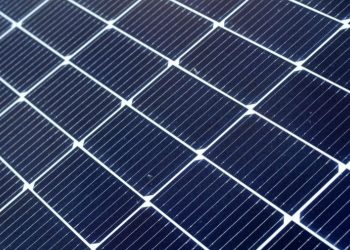How do you choose the best spot for your solar panels at home?
- Identify sun-exposed areas
- Assess the condition of the areas
- Consider the space
- Consider the accessibility
- Follow regulations
Overview
- People are recognizing the importance of environmental responsibility and are adopting sustainable, eco-conscious lifestyles by transitioning to solar power.
- Prioritize sun-exposed spots for maximum energy production. Assess area conditions, plan for space, ensure accessibility and follow safety regulations. Seek professional guidance when needed.
- Everyone is encouraged to invest in solar power as a means to support a greener and sustainable future, with the suggestion to contact a trusted solar panel provider for more information.
The United Nations reports that the period from 2015 to 2019 marked the five warmest years on record, with 2010-2019 ranking as the warmest decade in history. This alarming trend, particularly noted by the younger generation, has created a pressing need to address climate change.
People are now recognizing the significance of environmental responsibility and adopting sustainable, eco-conscious lifestyles like transitioning to solar power.
Given these climate concerns, this article will assist you in examining crucial factors for selecting the best spot for your home solar panels. This ensures both environmental responsibility and the maximization of potential savings.
Identify Sun-Exposed Areas

To find the best spots for solar panels, focus on sun-exposed areas. Solar irradiance, crucial for energy production, depends on sunlight exposure.
The more exposure your panels receive, the greater the solar energy output you can generate. This connection underscores the significance of careful site selection in achieving maximum energy efficiency from your solar installation.
In the Philippines, south-facing areas get the most sun, while north-facing areas receive less direct sunlight. Watch for shadows from trees or buildings. Mobile apps can help track the sun’s path, simplifying the process and optimizing energy generation.
Assess the Condition of the Areas
Once sun-exposed areas are determined, evaluate their structural integrity and potential obstructions.
For roof installations, ensure the roof can bear the weight and withstand adverse weather conditions. Check for sources of shade, like overhanging trees or nearby buildings, which can reduce solar efficiency.
Ground installations have their pros and cons too. In garden areas, assess soil quality for stable panel support, crucial for storm resilience. Opt for well-draining, firm soil. Remember that solar panels are prone to dust and debris buildup.
If you’re unsure, consult a professional solar installer for expert insights to make an informed decision based on your specific needs.
Read also: Types of Solar Panels: Which One Is For You?
Consider the Space
To avoid shadows affecting solar efficiency, meticulous layout planning is essential. This means assessing available space, emphasizing solar productivity, and optimizing sunlight conversion.
For example, imagine a homeowner in a sunny location who initially installs solar panels but doesn’t use all their roof space. Later, they discovered they could have added more panels, increasing energy production and savings.
A well-planned, spacious area accommodates extra panels, substantially boosting electricity generation. More space means more panels, translating to increased energy, and making it both an eco-friendly and financially sound choice.
Consider the Accessibility

It’s essential to consider the accessibility of your solar panels. Easy access ensures convenient installation and maintenance, making it easier to service your solar panels when necessary. This means quicker and cost-effective maintenance and the operation of your solar system at its peak efficiency.
For instance, solar panels are installed on a rooftop with limited access. Technicians find it challenging to reach the panels for routine cleaning and repairs. This leads to extended downtime and higher maintenance expenses.
Factor in access routes and proximity to maintenance equipment to make sure technicians can easily reach the panels. A well-accessible location minimizes disruptions and streamlines the maintenance process, safeguarding your trouble-free solar investment.
Follow Regulations
By following regulations, you not only guarantee the longevity of your system but also minimize potential hazards. Safety standards and installation requirements, ensure that your solar system functions optimally and safely.
Compliance with these regulations offers an added benefit by simplifying maintenance. It ensures that technicians can access and service your panels efficiently, which is vital for their long-term functionality.
In essence, following regulations streamlines the entire process, from installation to maintenance, guaranteeing your solar panels remain in excellent condition. When having problems with safety standards and regulations, it is best to seek advice from professional solar installers.
Key Takeaway
Choosing the best spot for your home solar panels is an important decision in your quest for a sustainable future. This choice carries multifaceted benefits, with a profound impact on both energy efficiency and environmental responsibility.
To embark on this transformative path, invest in solar power today. Join the growing solar community in the Philippines today committed to a greener and more sustainable future. Contact our team at Solaric, the Philippines’ trusted solar system provider, to take the first step towards a brighter, cleaner tomorrow.

















